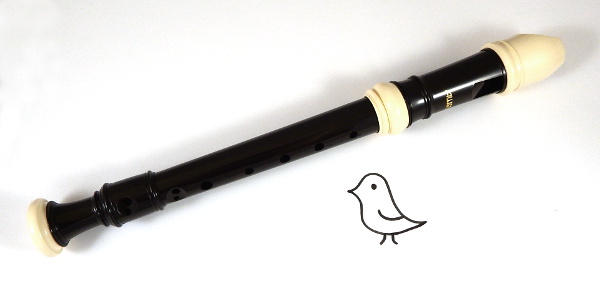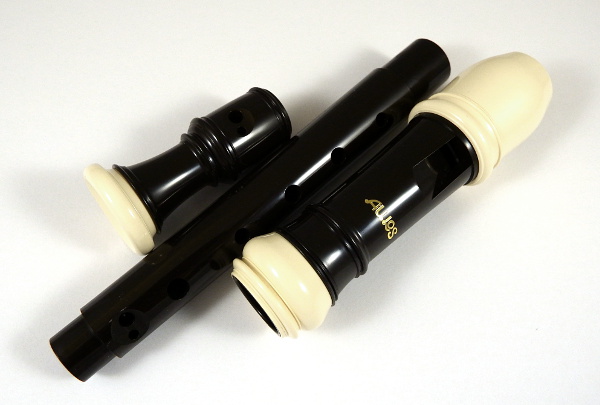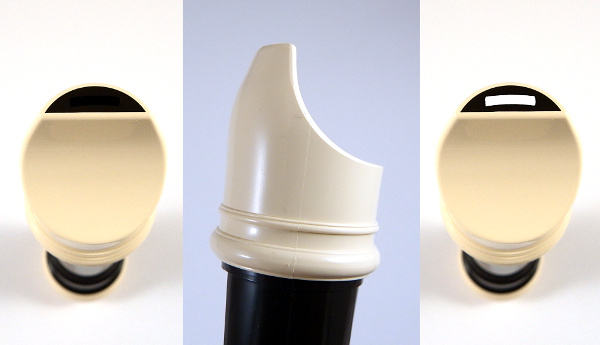Instrument: Sopranino Recorder
Model: Aulos 507B Symphony (Baroque/English Fingering)
Materials: Plastic
Key: F (440 Hz)
Available: Amazon.com | Amazon UK
This sopranino is the tweety birdy of the recorder family. It’s very high pitched with clear notes, though there’s a subtle warbling or vibration. That’s not a sound I’m used to hearing from plastic recorders, so that was a surprise.
Like all sopraninos, this is a tiny instrument. The length is about 24.5cm. The distance between finger holes varies from 7mm to 15mm. People with larger fingers will likely struggle to play this. On the other side, it’s a good choice for anyone who struggles with the size and weight of larger recorders.

Image Caption: The sopranino recorder on a white background. The recorder is dark brown, with cream/ivory joins and mouthpiece. A simple bird is drawn on the background next to the recorder.
It doesn’t require much breath to play, due to the size and the narrow bore. Sounding the notes in the different registers has a few challenges. It’s a little fiddly to partially open holes when they’re so small. But once the hole covering is right, it’s not difficult to get the higher notes to sound.
I really liked that it’s in three pieces, rather than two. I tend to have my last finger hole over more than most people, so it was a big plus to be able to move it. The build quality is nice, with no rough edges on the holes or in the bore. The pieces fit together snugly.
This is a great little instrument. It’s well made, plays smoothly, and is ideal for those times when I’m having wrist problems. I was pleased with the tone and overall quality of the recorder.

Image Caption: The recorder split into three pieces: the bottom piece has the last finger hole (consisting of two smaller holes), the middle has the other finger holes, and the last is the mouthpiece.

Image Caption: Details of the mouthpiece. On the left is the mouthpiece viewed from the end. On the right is the same view, but with the hole highlighted in white, to show the slightly curved shape of the hole. The middle view is the mouthpiece from the side, showing how it tapers in a curve towards the part that goes in the mouth.